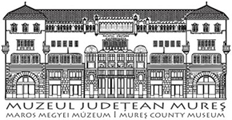Marisia - Maros Megyei Múzeum Évkönyve 31/1. (2011)
Book Review
348 Book Review the joint use of the vertical and horizontal method, several groups of graves have been discovered in the central part of the cemetery and around its margins. At the present stage of the research, these represent three chronological burial horizons. The first one includes the end of the 11th century-first third of the 12th century, the second one includes the second third of the 12th century, and the last one covers the period between the end of the 12th century and the first third of the 13th century. Regarding the social status of the population, it can be stated that wealthier people were buried around the church, at least which is what the larger number of silver objects suggest. It is impossible to define the populations ethnicity and identity, based on archaeological findings, therefore the only certain conclusion is that the cemetery carries the military and political elite, the colourful community of the ispáns’ castle of Doboka, also known from the written sources. Although we mainly agree with the authors argumentation, we would be more cautious regarding the definition of ethnicity, interpreting it mainly, but not exclusively as a sociological construction. The last, comprehensive conclusions regard the cemetery’s relationship with the castle complex. These conclusions are by their nature anticipatory, since only a small part of the complex has been revealed so far. The church and cemetery of the IV castle area functioned during the time of the timber-and-earth castle built in the second half of the 11th century. In parallel there also existed at least two churches and cemeteries in the first half of the 12th century. The question regarding the relationship between the populations of the above-mentioned cemeteries is still pending and so is the issue of their settlements’ location and structure. Although this was not the author’s aim, he might have considered comparing his results obtained in Doboka to other county centres of the Arpadian Hungarian Kingdom, already revealed or still under excavation. There are plenty of photos and the numerous statistical analyses are made more intelligible with the help of well structured tables. Maps that illustrate the graves’ characteristics or the dispersal of different object types have the same aim. There are, however, several technical and editing inaccuracies: e.g. in case of tables 49 (scanty legend), 54 (faulty legend), 61 (the last object type is missing from the map) and 63 (missing legend). Table 64 is the first cumulative map of Transylvanian churchyards and it is therefore regrettable that several mistakes have occurred in the numbering and placement of the settlements that appear on the map. Respecting the order of the settlement register, we indicate the erroneous numbering (the number is followed by the information as shown in the book in italics, the name we considered correct follows the colon in normal character; in case of numbers appearing doubly we used curly brackets, numbers that do not appear on the map are followed by an exclamation mark): [6.] Nemeszsuk: Magyarvalkó; [17.] Segesvár: Székelyudvarhely; ! 19.(Kányád); !27.(Bogoz); 28. Székelyudvarhely: Bögöz; [29.] Sajósárvár: Kányád; [31.] Szászorbó: Berekeresztúr; 37. Berekeresztúr: Várfalva; 38. Várfalva: Szentábrahám; !39.(Szentábrahám); !41. (Gyalu); !42.(Magyarvalkó); !46.(Csapószentgyörgy). Some settlement names also require correction: 26. Szászszeben: Nagyszeben; 34. Szentlászló: Nyárádszentlászló; Homoróddaróczfalva: Homoróddaróc. The almost 20 pages long English abstract follows the Hungarian text’s structure; the most important chapter that contains the conclusions has almost entirely been translated. All in all, the early medieval Transylvanian archaeological bibliography has been enriched with a very important monograph. After the much discussed excavations in Doboka, the articles - looking more like excavation reports - signed by many authors, this is the first exigent archaeological processing. After excavating for the second time (from the museum’s storage, chests and dressers) the cemetery of the IV castle area, we hope that the author’s further work will contribute to the carrying-on of the ‘Doboka-plan’.
